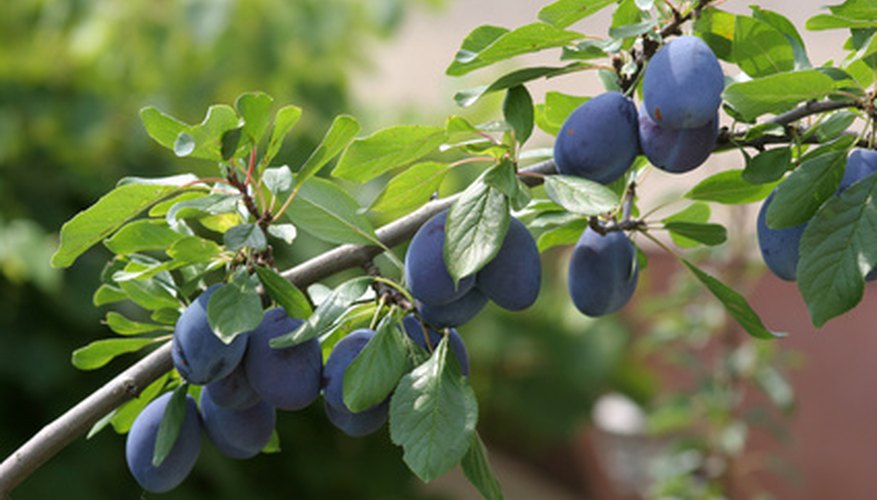The Damson plum is a tart European fruit that is mainly used in cooking and jam preparation.
Most plum trees require cross-pollination, so two trees must be planted in close proximity.
Damsons, however, are self-pollinating. The fruit itself is oval and a rich, deep blue or indigo in colour.
Brwon Rot
Brown rot is caused by a fungus that, given warm and wet weather conditions, can destroy an entire crop of stone fruit. Twigs, blossoms and fruit can all become infected. Infected twigs develop cankers, and developing leaves will turn brown but remain on the tree. Plum flowers are less susceptible to infection than other fruit blossoms. When infected, the flowers turn brown and fall off. Infected fruit will develop rapidly spreading, soft brown spots and will quickly rot on the tree.
- Brown rot is caused by a fungus that, given warm and wet weather conditions, can destroy an entire crop of stone fruit.
- Infected twigs develop cankers, and developing leaves will turn brown but remain on the tree.
Sanitisation is one effective method of controlling brown rot infection. Prune all infected fruit and cankers and burn them or bury them.
Control insects that feed off the fruit, as they damage the fruit and increase the chance of infection. Fungicides can also be effective in preventing the spread of brown rot.
Black Knot
Another common fungal disease is black knot, which can cause death of the twigs and branches it infects and, in severe cases, death of the entire disease.
In the early stages, the disease appears as small, light brown swellings on the base of the leaf or on leaf spurs.
These swellings turn black and hard as the disease progresses. Damson plums are particularly susceptible to black knot.
- Another common fungal disease is black knot, which can cause death of the twigs and branches it infects and, in severe cases, death of the entire disease.
- These swellings turn black and hard as the disease progresses.
Pruning and destroying all knots is the key to stopping the spread of disease.
During the dormant season, cut out and destroy the knots and approximately 1 inch of the surrounding healthy bark. Fungicides can also be applied to prevent new infection.
Bacterial Spot
Caused by bacteria, bacterial spot can affect twigs, leaves and fruit. Infected fruit develop spots that eventually break and the flesh below sinks to form a pit.
These spots develop on the leaves as well, leaving a hole when they break and fall out. Twigs develop cankers that prevent buds from developing.
- Caused by bacteria, bacterial spot can affect twigs, leaves and fruit.
- These spots develop on the leaves as well, leaving a hole when they break and fall out.
Preventing the spread of the disease is imperative, as there is no available treatment. Chemical sprays, followed by antibiotic application, can reduce infection.
Plum Pox
Plum Pox Virus (PPV) was first found in North American fruit trees in 1999, but it has a history of devastating trees in Europe since 1915. It affects other stone fruit trees, such as peaches, but most severely affects plum. Leaves of infected trees can develop light green to yellow blotches or speckles and dead areas.
- Plum Pox Virus (PPV) was first found in North American fruit trees in 1999, but it has a history of devastating trees in Europe since 1915.
- It affects other stone fruit trees, such as peaches, but most severely affects plum.
Infected plums are deformed, are discoloured and develop dark rings in the skin. They may also drop off the tree early.
The virus is spread over short distances (within an orchard) by aphids, and over long distances when infected plants are moved to a new location.
Measures are in place to try to eradicate the diseases. Imported fruit trees are carefully inspected, and infected local trees are eliminated immediately.
Aphid control, through lady beetle introduction or herbicides, is another step. Scientists are also developing genetically engineered species that are disease resistant.
